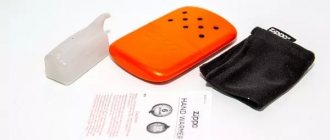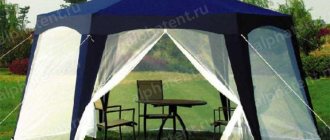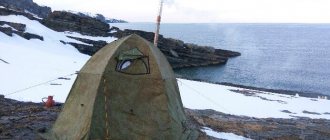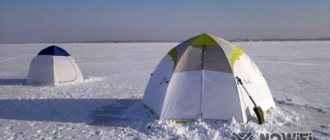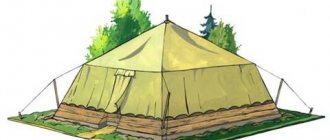Gas infrared
In this method we will tell you how to assemble such an installation yourself, because... building an infrared burner is very difficult.
Materials and tools
For production you will need:
- Infrared ceramic burner.
- Gas cylinder.
- Oxygen hose 2 m with a diameter of 0.4-0.6 cm.
- Clamp 2pcs
- Screwdriver
- Nozzle for liquefied gas or natural gas (depending on the fuel used).
- Retaining ring
When choosing a ceramic heating pad, it is better to give preference to small models - gas is consumed more economically. The peculiarity of infrared heating is that it heats objects, not air, so if possible, it is good to have a stand under the heating pad, which will allow you to direct the energy.
Manufacturing instructions
The diagram clearly describes the principle of operation of the stove. The gas-air mixture allows you to achieve high temperatures with the least risk of fire.
Principle of operation
Essential elements
- Place the nozzle into the connection hole of the infrared burner.
- Attach the retaining ring on the reverse side.
- Place a clamp on the oxygen hose to prevent gas leakage.
- Connect to the nozzle, tighten the clamp with a screwdriver.
- Connect the gas cylinder to the hose, also using a clamp.
- To light the heater, you need to hold a match to the ceramic heating pad. It is forbidden to ignite gas near the nozzle. Fuel can be propane, argon and natural gas. When replacing fuel, you need to change the type of injector. The gas camp stove is ready.
Type of infrared gas stove for a tent
Operating rules
A camp stove for a tent should not only heat the space, but also serve as an assistant in cooking.
Infrared heaters are not intended for this, but craftsmen have learned to cook on the following tiles:
- You need to place the heating pad with the radiating side up, and place two stones or bricks on the sides.
- Place metal rods or skewers on the bricks.
- Place dishes on top for cooking and heating canned goods.
A 200g can will last for 2 hours, after which you need to replace it with a new one. The gas cylinder must stand upright. It is prohibited to leave the stove unattended. Ventilate the tent from time to time. The surface temperature of the ceramic heater is 800-900 degrees.
From a can of alcohol
The debate about how best to use alcohol, for indoor or outdoor heating, will never end. This does not prevent tourists all over the world from using it as fuel for mini stoves for tents. The weight and dimensions of this design are insignificant; it is convenient to take on a hiking trip.
Materials and tools
To make a homemade camping stove you will need:
- Any tin can.
- Nail or awl for making holes.
- Alcohol 96%. Vodka won't do.
- Metal cover
- Knife and scissors for even cutting of a tin can.
- Ruler.
Manufacturing instructions
To make an alcohol stove, no complex diagrams are needed; the principle is simple and accessible, as are the materials.
From a beer can:
- You need to take two beer cans (or Coca-Cola cans).
- The bottom of the jars is cut off by approximately 5 cm.
- Insert the bottom into the bottom, slightly twisting the edges of the jar. Make a hole in the middle in the part of the bottom that became the stove lid.
- In both beer and coffee cans, holes are made for the fire to escape by using a nail or awl to pierce holes around the perimeter, about a millimeter in diameter. The number and diameter of holes is selected experimentally and depends more on the size of the can itself. For the stove, holes are made from beer cans in the lid, and in a coffee stove at a level slightly above the middle.
4 simple steps - Pour alcohol into the hole on the lid and close it with a coin. The DIY camp stove is ready.
Work process
Operating rules
Such a burner must be ignited in a special way:
- The place for the stove is chosen at a short distance from the walls of the tent. This may be a stone or other immovable, non-flammable base. If a can of alcohol turns over, you will have to wait until it burns out.
- Place the stove on a metal lid; a regular seamer will do.
- Pour alcohol onto the lid under the base of the burner and set it on fire. Burning alcohol outside the stove should heat its contents.
Visual application
Such camp stoves for tents are used in the off-season; the design will not give a large increase in temperature, but it will allow you to heat canned food and boil water. The stove will boil one liter of water in 9 minutes at home; when camping it will take longer, depending on the ambient temperature.
The process of making a heat exchanger for a tent
Front and back covers:
From a sheet of galvanized steel we cut out two squares measuring 250 × 250 mm. In the sheets we drill 4 rows of holes with a diameter of 10 mm in a checkerboard pattern. For a mirror arrangement of holes, they are made in two sheets at once. Using a sheet bending machine, we bend the edges of the sheets at 25 mm to get low boxes.
Using a thick core or a round piece sharpened to a cone and a pipe with a diameter of 25 mm, we expand the holes.
We hammer the core inside the box.
Pipes:
We cut aluminum pipes (18 pcs.) 350 mm each.
We make a pipe with a diameter of 50-60 mm from metal or purchase a ready-made one. It is advisable that a polypropylene pipe be put on it, which will serve as a chimney. Using metal scissors, we make a dozen cuts 20 mm long and bend them outward using pliers, as shown in the figure.
Side walls and top:
We cut out a solid sheet from the metal, from which we bend the side and top walls of the heat exchanger.
In the upper part we drill a hole corresponding to the diameter of the metal pipe for the chimney.
We drill small holes around the perimeter with a reserve, and then use a chisel to cut out a large one.
Using a file or drill, we adjust the size and geometry of the hole so that the pipe fits tightly into it. We remove hangnails.
Using a sheet bender, we bend the heat exchanger body.
You can roll the sides to add rigidity to the structure. We drill holes in the pipe petals and the body and use rivets to connect them.
Assembly:
To simplify assembly, insert the bottom row of pipes and tighten the front and back walls using a pin or clamp.
We fasten all the elements of the assembled structure using resistance welding (you can use rivets).
To increase the reliability of fastening using a core, we further expand the holes on both sides of the heat exchanger.
We recommend: Insulation for walls inside a country house: price, material characteristics
From a pipe on wood
If the trip is planned for the winter, you cannot do without a serious heating device. Any stove should not be left unattended, especially a wood stove. Purchased models of the best tent stoves are equipped with a spark arrester and an additional chamber for complete combustion of gases. It is difficult to make additional cameras in homemade structures.
If you remove the chimney not vertically, but at an angle of 30 degrees, you can increase the efficiency by 30%. A simple mesh in the chimney is used as a spark arrestor. Thanks to the installation, you won’t have to wait long for heat; the stove heats up the space instantly.
Materials and tools
When making a stove for winter fishing with your own hands you will need:
- Chimney pipe 200mm.
- Clamp for plugs 200mm – 2 pcs.
- The chimney pipe is 80mm, the length depends on the height of the tent.
- Plugs 200mm – 2 pcs.
- 80mm clamp.
- Legs from a travel chair.
- Sheet of tin.
Manufacturing instructions
The diagram is quite general, but shows the principle of operation. The shape of the oven depends on the available materials and capabilities. If you don’t want to weld parts, you can use a simpler method described below in the instructions. Tourist stoves for tents should be collapsible and light in weight.
- Cut a suitable pipe length of 200mm, based on the size of the tent and the desired fuel load.
- Bend the edges of the plug slightly to allow free entry into the pipe.
- Use a grinder to cut a hole for the chimney pipe with a diameter of 80mm. Place the hole at a distance of 10-12 cm from the rear plug.
- Try on the chimney pipe, adjust the hole if necessary.
- Cut 20-30 cm from the chimney pipe, cut the edges for riveting by 5-7 cm. This will serve as a diversion.
- Insert the tube into the hole and rivet it, pressing the cuts on the outside together.
- Place a clamp on the outlet; this will hold the metal in place as it expands.
- In the second unattached plug, cut a hole for a neck with a diameter of 70 mm. From a sheet of tin, cut a piece 70 mm wide for the neck hole, and insert a twisted piece of tin into it. Drill holes.
- To regulate the blowing force, you should make a cover from an 80mm pipe. Cut a piece of pipe equal to the length of the piece of tin at the neck. Cut a circle with a diameter of 110 mm from the sheet and rivet it. Put it on the lid.
Using the lid - Place a chimney pipe of suitable length on the outlet, install the stove on the legs of a camping chair, and lead the chimney into the opening of the tent.
- Everything is ready, but due to the round shape of the oven, there is no possibility of cooking.
Operating rules
The operating rules are simple:
- The stove must not be left unattended; non-flammable materials must be placed under the structure, and the chimney pipe must be insulated from the tent. This stove will easily heat a 4*4m tent.
- After use, allow the metal to cool, pour out the ash, and disassemble the stove into parts for transportation.
- Ventilate the tent, check the draft and tightness in safe conditions before leaving.
- All openings must be precisely adjusted to prevent smoke leakage.
A stove for a winter tent is made with your own hands in a day, and lasts for several years.
DIY heat exchanger for a winter tent
Making a heat exchanger for a tent with your own hands is not difficult. Metal costs will be minimal, homemade products will be more profitable than their factory-made counterparts. When making a homemade product, there is no need for any fantastic precision in maintaining the dimensions - this is not a double-circuit boiler, but a simple homemade heat exchanger for a tent for recreation and fishing in cold winter conditions.
It is best to make a heat exchanger for a winter tent from stainless steel and aluminum tubes. If there is neither one nor the other, find any thin-walled metal pipe with a diameter of about 20 mm and sheet iron 1 mm thick. You will also need a welding machine and a drill with a metal drill of a suitable diameter. Assembly will not take you much time; installation can be completed in just a day.
All sizes are rather a guideline, you may well change something specifically for your needs.
Preparation of heat exchange pipes
Our first task is to build the heat exchanger itself in the image and likeness of its fire tube counterpart. To do this, you need to take two rectangular pieces of sheet metal and mark holes in it for the heat exchange tubes. We recommend making three rows in a checkerboard pattern - five tubes in the top and bottom rows, four tubes in the middle row. The most difficult task is to weld the tubes on both sides to two sheets of metal.
We recommend: Flushing the heat exchanger of a gas boiler: nuances of the procedure and review of cleaning products
Housing assembly
Next, we assemble the body from four more segments. In the upper part we make a hole for the chimney. It must be designed so that the chimney can be easily removed. We weld the top cover to our heat exchanger, and weld the side covers on the sides. It’s too early to try to heat a winter tent - you need to make legs.
It is best if the legs are foldable, but you can do without it. Make them from thin metal rods (wire), when measuring their length, do not forget to take into account the height of the tile/burner used. Accordingly, the lower part of our heat exchanger for a winter tent is not continuous - there is a cutout in which the internal tubes are visible. It is through this cutout that the flame and heat will penetrate inside our unit.
Electrical work
To operate a winter tent heat exchanger you will need a good fan. We recommend taking a high-performance cooler with a diameter of 120 mm from a desktop computer. Such coolers have good throughput and minimal noise levels. We weld suitable fasteners to the back of our heat exchanger, screw on the fan, and solder long wires to connect to the battery (a 2x0.75 SHVVP is suitable).
Now everything is ready to start the heat exchanger. We place it in a winter tent, connect the chimney and take it outside, and place the stove/burner below. We connect the gas cylinder, ignite the gas, turn on the cooler and wait for it to warm up. Until the metal burns, there may be an unpleasant odor. After 10-15 minutes, our unit will return to operating mode - adjust the air temperature by adjusting the stove/burner.
Buy a ready-made heat exchanger for a winter tent or assemble a homemade one – it’s up to you. But a homemade solution is cheaper, and in terms of reliability it is not inferior to factory-made analogues.
Which stove is best to use in summer?
In summer, the oven is needed more for heating and preparing food, tea, coffee. There is no point in pulling gas cylinders or wood stoves - heating the tent is not needed.
The best solution would be a mini-alcohol stove for a tent. Light weight and compact dimensions allow each member of the camping trip to take their own homemade stove.
The only drawback in comparison with ready-made branded designs is the inability to transport the stove with filled fuel. But this is not a significant drawback - putting a bottle of alcohol in your backpack is not difficult. Long-burning stoves are used for winter tents.
Which stove is best to use in winter?
All three types of stoves are suitable for a winter tent. Winter fishing involves staying at low temperatures for a long time; the holes should not freeze, otherwise fishing will not take place. The difference in temperature in the tent and outside without heating devices will not exceed 2-3 degrees, which is not noticeable at -20C.
- Most often, a long-burning gas infrared heater and a wood-burning stove are used. They provide good heating and increase the temperature in the tent by at least 15-20 degrees. The gas model is suitable as a camp stove for cooking, it heats up the space perfectly, it is compact and lightweight.
- A more economical option would be a wood stove. The steel structure is easy to transport. The folding stove can be quickly assembled and disassembled. If fishing is planned near plantings or forests, there will be no problems with collecting firewood, otherwise you will have to bring fuel with you. There is also a risk of carbon monoxide poisoning if the chimney pipe is not sealed. Even if a homemade stove for a tent is made according to technology, it is necessary to ventilate. Wood stoves for winter fishing tents are used for large tents, and gas stoves for small ones.
Factory models
Let's look at the most popular types of heat exchangers for winter tents. The equipment is new, so we won’t see much variety here. But what is on sale is more than enough.
Heat exchanger Sukhovey
We have before us a good device, made of durable stainless steel and aluminum pipe. It features a capacity of up to 184 cc. m/hour and can operate at high and low speeds. The carefully thought-out design ensures high efficiency, and the low-noise fan relieves users of unnecessary noise. The device easily unfolds into working condition and works with tiles from the manufacturer Hephaestus. The cost of the model is approximately 7,000 rubles.
It is also possible to use other burners that are compatible in size with this heat exchanger.
Heat exchanger for fishing Sibtermo ST-1.6
The presented model is distinguished by the presence of two fans at once, which increases the throughput. This is an excellent heat exchanger for a tent for winter fishing, allowing you to warm up a large volume of air as quickly as possible. The weight of the unit is only 1.88 kg, it can be used in conjunction with any gas and infrared burners. Even in the most severe winter, your tent will be warm and comfortable. The chimney in this model is connected from above.
The cost of the heat exchanger for the Sibtermo ST-1.6 winter tent is about 5,600 rubles.
Heat exchanger "Desna BM"
Extremely compact, with one fan, ideal for a winter tent. Works in both automatic and turbo mode. Can be used in conjunction with any burners and stoves (including infrared). The case is made of stainless steel and protected by durable enamel that can withstand heating to high temperatures. The manufacturer claims high efficiency, incomparable to the efficiency of any other analogues. The cost of the unit is about 7,000 rubles.
We recommend: Copper pipes for heating: price, features, advantages and disadvantages, popular manufacturers
Gas stove for tent
A camp stove with one or two burners, powered by gas, is often used as a heater. Depending on the model, weight can vary from 400 g to 2 kg. This option has the following advantages:
- the ability to conveniently cook or reheat food;
- the surface is easily washed from dirt;
- often the design allows for folding into a compact suitcase;
- economical fuel consumption;
- presence of a protection system.
As in special heaters, a gas cartridge is used here. It is not included in the package, but must be purchased separately. It is better to give preference to models with a safety valve that shuts off the gas supply in case of overheating or other unusual situations. Resumption of combustion occurs after pressing the red button located on the gearbox.
It is important to remember that heating a tent in winter while fishing without burning out requires constant ventilation of the space. At least a minimum gap should be left so that combustion products escape into the atmosphere, excluding accidental poisoning.
Gas heater for tent
The travel heater option is perhaps the safest. First of all, it was originally designed to create heat in a closed room, so there is no risk of ignition of other objects, carbon monoxide poisoning, etc.
Such heating devices weigh no more than 1.5 kg and are very economical. So, on average, about 200 g of gas is burned in 4 hours of operation. At the same time, the device will not allow you to freeze even in severe frost.
Most models are equipped with piezo ignition, which eliminates the need to use matches or a lighter - the tool for creating a spark will always be at hand. Some users note that in severe frost the heater loses power and the gas entering the tent heater stops evaporating. In this case, you need to warm up the fuel supply pipe with several matches or a tablet of dry alcohol.
It is recommended to choose a model with a gas preheating system. Its essence lies in the presence of a tube that passes through the flame and frames the cylinder. As a result, the gas is heated before it exits, and therefore burns stably even at a temperature of -30.
It is important to leave a ventilation connection with the outside space. This will allow:
- Avoid the formation of condensation inside the tent, which will prevent things from getting damp.
- Ensure timely removal of carbon dioxide, which has a detrimental effect on the general condition of the body.
Among the advantages of a gas heater are:
- space heating rate;
- good drying of clothes;
- ability to heat food and water.
The disadvantages include:
- the relatively high cost of the device and the fuel cartridges themselves;
- the need to replace the canister at night.
Burners (primus stoves)
This is a universal heater option that, depending on the model, uses gaseous or liquid fuel. Mostly specialized stores sell gas burners. When choosing a model, you should pay attention to the power - not lower than 2000 W. With this value of this parameter, a liter of water will boil after 5 minutes.
Options that can support the combustion process from both types of fuel deserve special mention. The transition between gaseous and liquid fuel occurs by replacing the nozzle.
A pure gasoline tent heater has such advantages as frost resistance, convenience, reliability, and good heat dissipation. However, despite all the positive aspects, it cannot be recommended to fishermen and here’s why:
- A canister of liquid fuel weighs much more than a gas cylinder, and if you need to cover a long distance on ice in search of fish sites, this can be a significant challenge.
- Even with the most careful use, fuel will get on your hands. In all other cases there is nothing wrong with this, but during fishing it will negatively affect the catch. After contact with tackle or bait, the smell of fuel will remain on your hands, which can be easily heard by underwater inhabitants.
- When gasoline and kerosene burn, a lot of carbon monoxide and soot are released into the air. The tent will have to be kept open, and all clothes will stink of combustion products.
There are also kerosene heater lamps. They have all the pros and cons indicated for liquid fuel heaters.

